Abstract
1. Drugs such as phenobarbitone and phenylbutazone, which increase the concentration of microsomal haem and cytochrome P-450, also increase the saturation of rat liver apo-(tryptophan pyrrolase) with its haem activator, as does the haem precursor 5-aminolaevulinate. 2. At 4h after the administration of the porphyrogens 2-allyl-2-isopropylacetamide, 3,5-diethoxycarbonyl-1,4-dihydrocollidine and griseofulvin, the total pyrrolase activity is increased whereas the haem saturation of the apoenzyme is decreased. This decreased saturation is prevented by pretreatment of the animals with the inhibitor of drug-metabolizing enzymes, SKF 525-A. 3. Pretreatment of rats with the above porphyrogens inhibits the rise in holo-(tryptophan pyrrolase) activity produced by subsequent administration of cortisol, tryptophan and 5-aminolaevulinate with two single exceptions, the possible reasons for which are discussed. 4. At 24h after the administration, in starved rats, of a single daily injection of the above porphyrogens for 1 or 2 days, the holoenzyme activity is significantly increased. 5. It is suggested that the saturation of rat liver apo-(tryptophan pyrrolase) with its haem activator can be modified by treatment known to cause destruction, inhibition of synthesis, increased utilization and enhanced synthesis of liver haem. The possible involvement of the latter phenomenon in the aetiology of mental disorders in some patients with porphyria is discussed.
Full text
PDF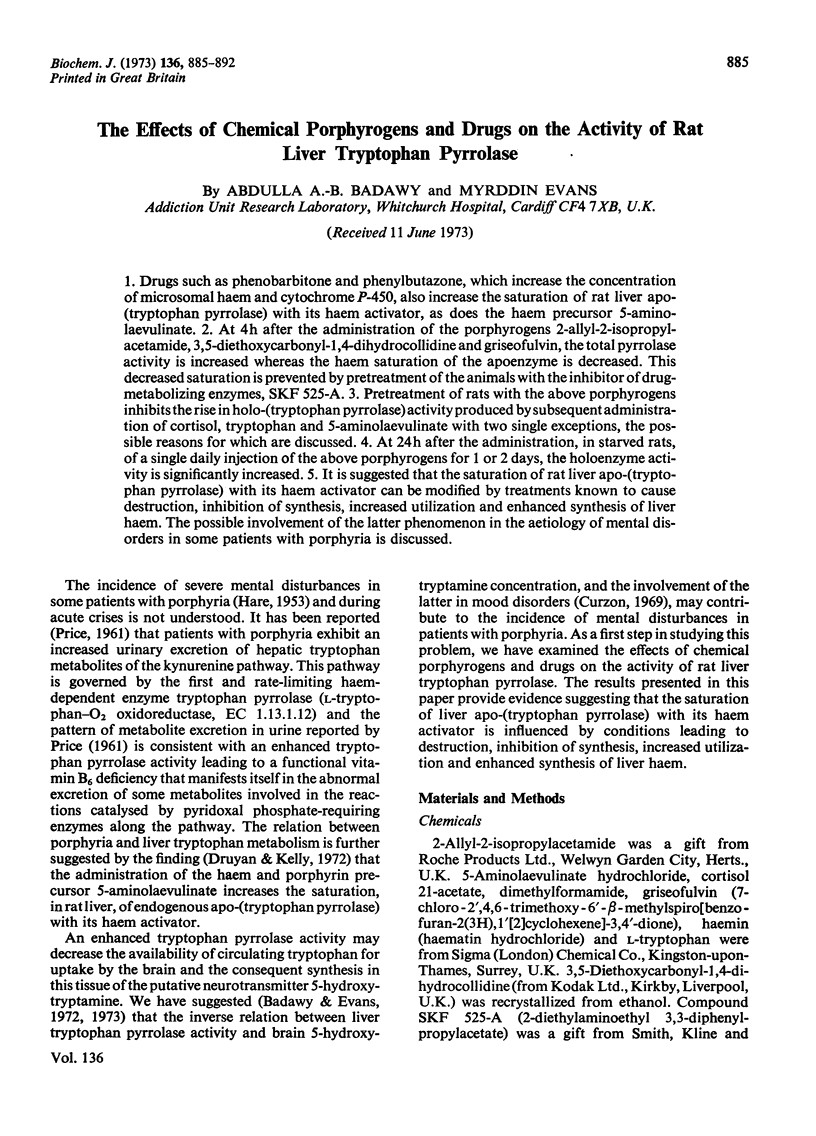
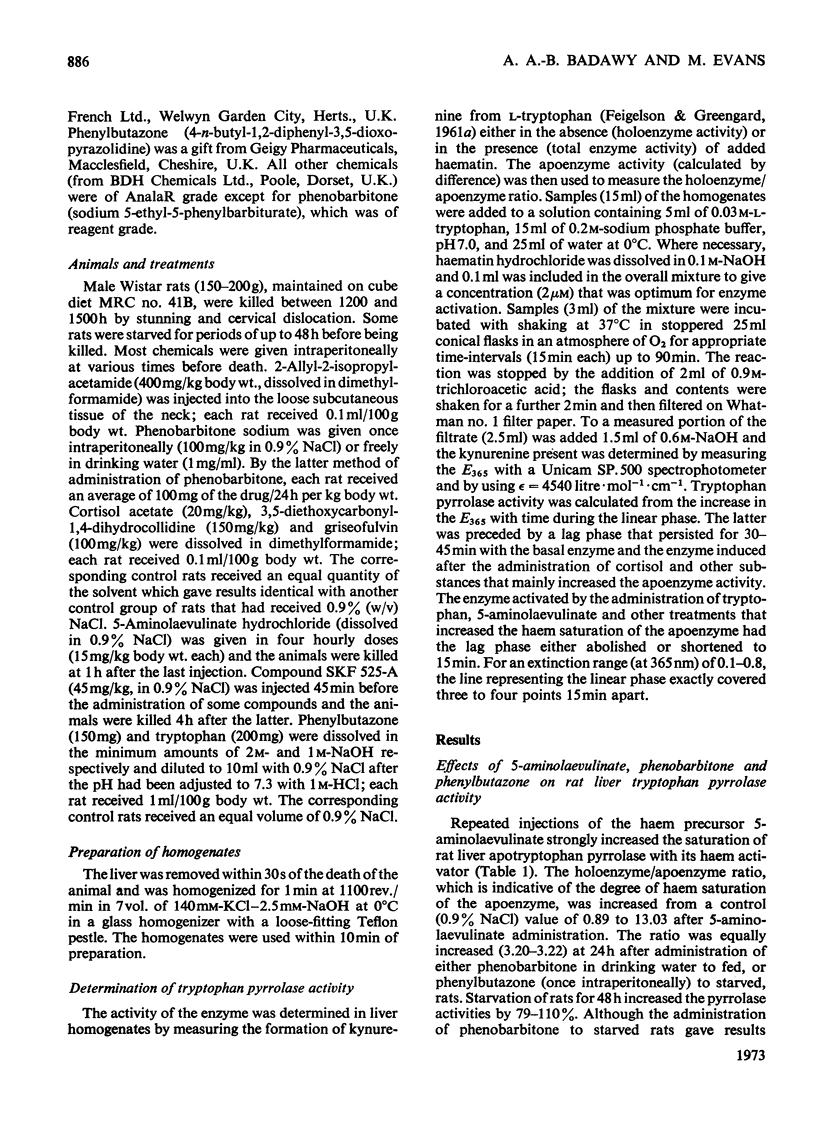
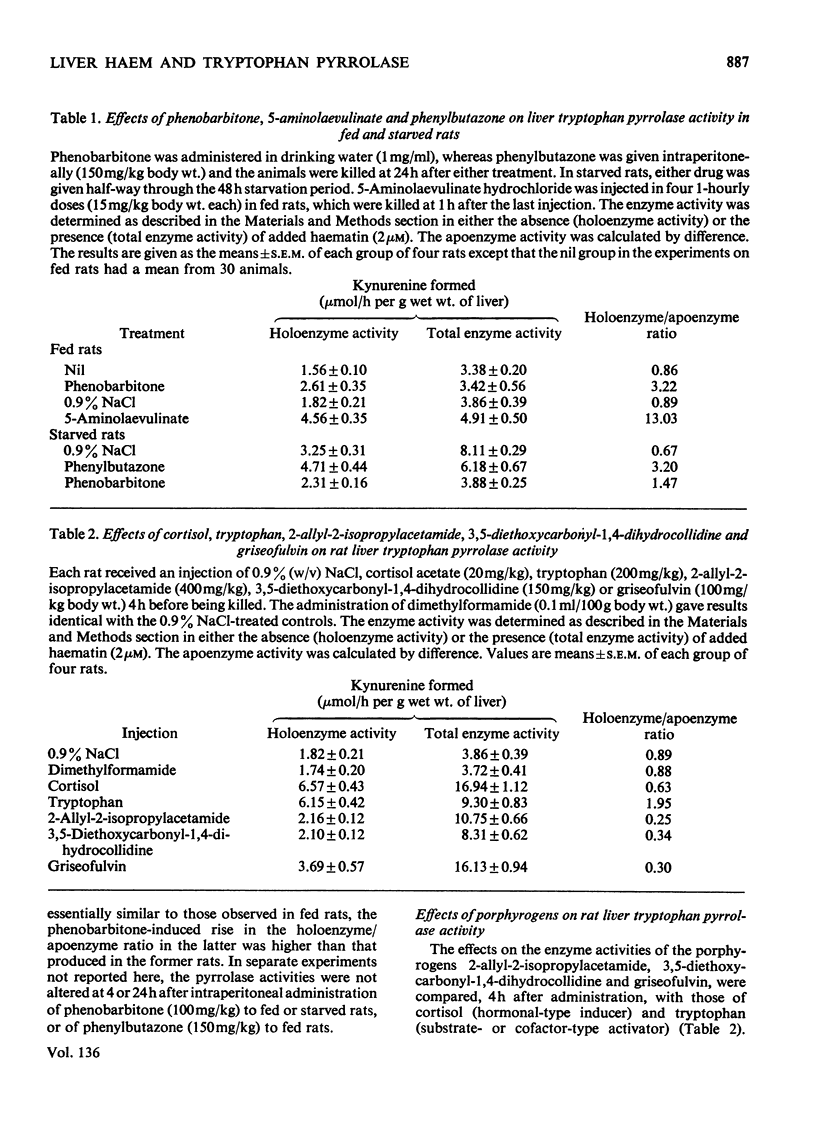
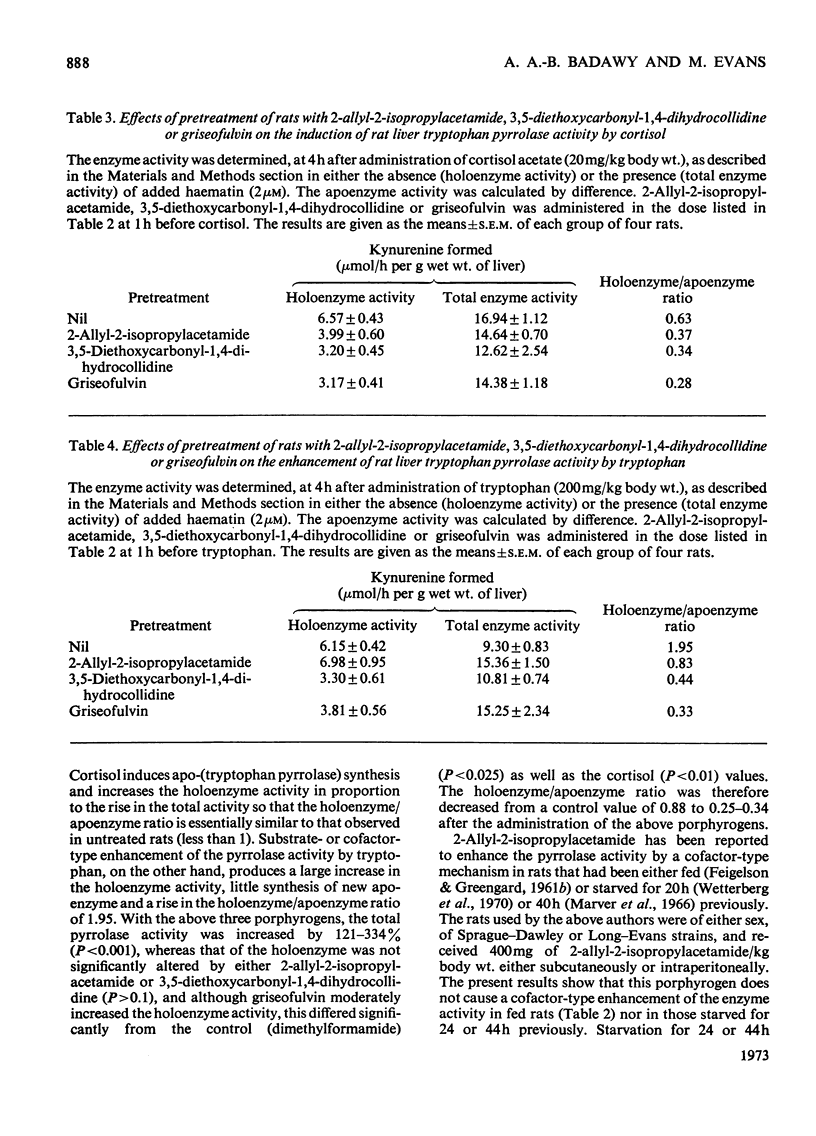
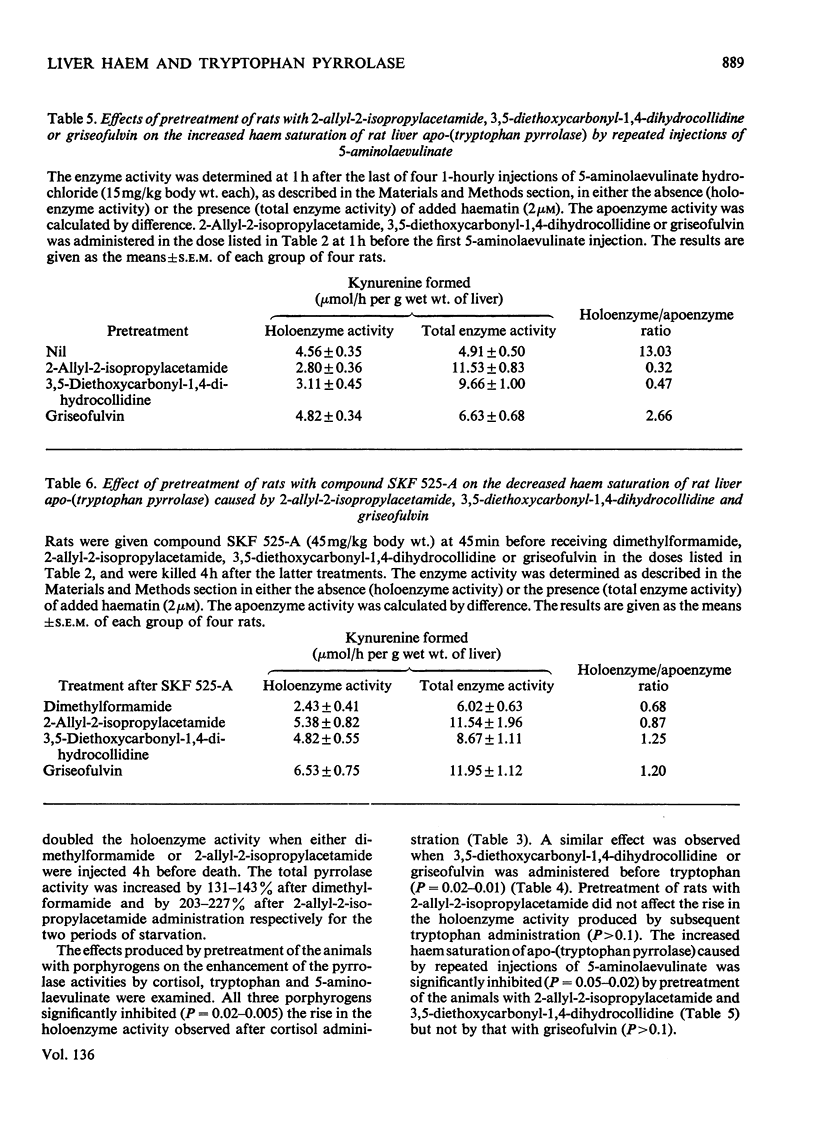
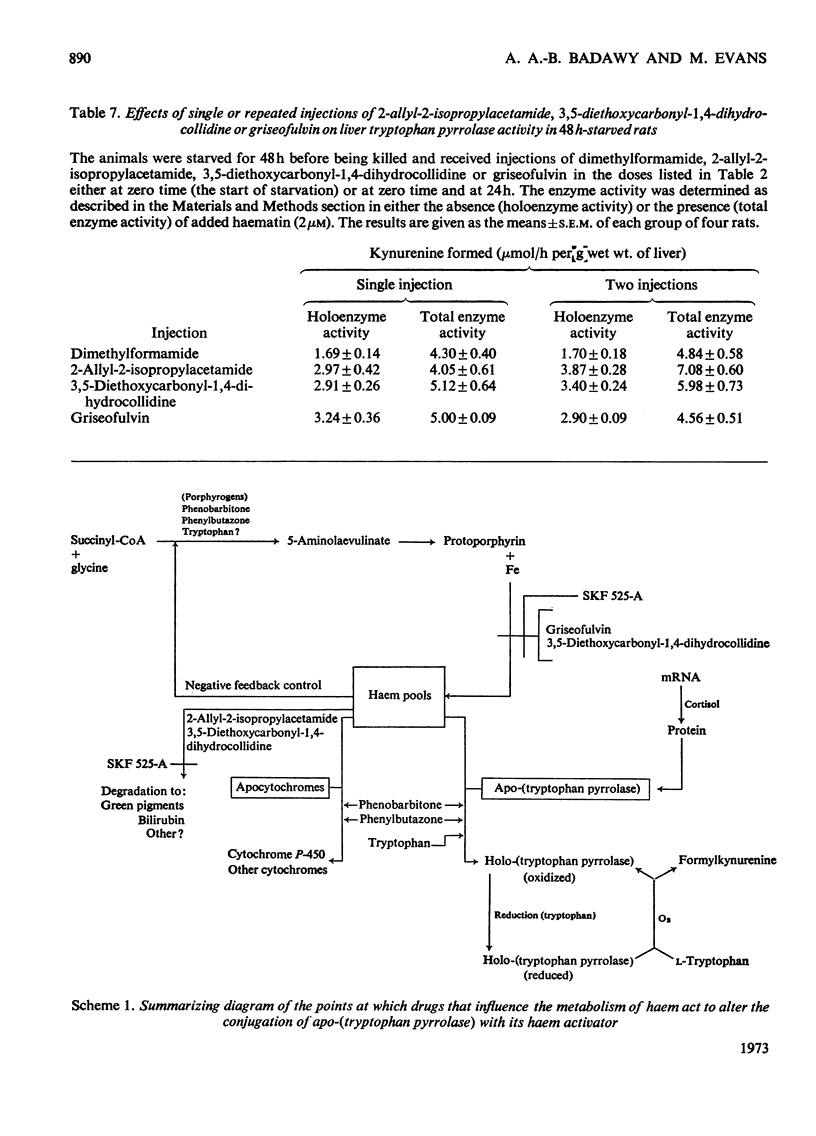
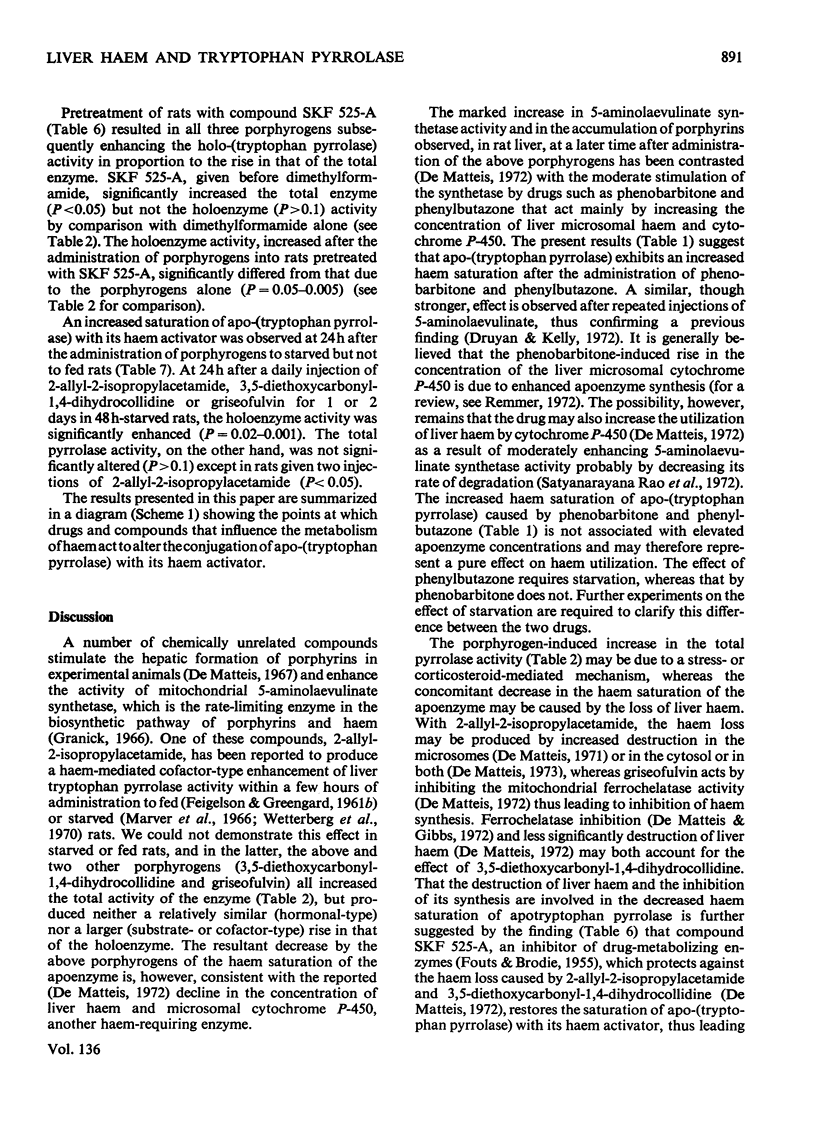

Selected References
These references are in PubMed. This may not be the complete list of references from this article.
- Badawy A. A., Evans M. Alcohol addiction, porphyria, and mental disorders. Lancet. 1972 Aug 19;2(7773):374–375. doi: 10.1016/s0140-6736(72)91752-7. [DOI] [PubMed] [Google Scholar]
- Calandra P., Rampichini L., Severini M. Tryptophan--niacin and tryptophan--serotonin pathways in weaning pigs with porphyria experimentally induced. Acta Vitaminol Enzymol. 1972;26(3):69–77. [PubMed] [Google Scholar]
- Curzon G. Tryptophan pyrrolase--a biochemical factor in depressive illness? Br J Psychiatry. 1969 Dec;115(529):1367–1374. doi: 10.1192/bjp.115.529.1367. [DOI] [PubMed] [Google Scholar]
- De Matteis F. Drug-induced destruction of cytochrome P-450. Drug Metab Dispos. 1973 Jan-Feb;1(1):267–274. [PubMed] [Google Scholar]
- De Matteis F., Gibbs A. Stimulation of liver 5-aminolaevulinate synthetase by drugs and its relevance to drug-induced accumulation of cytochrome P-450. Studies with phenylbutazone and 3,5-diethoxycarbonyl-1,4-dihydrocollidine. Biochem J. 1972 Mar;126(5):1149–1160. doi: 10.1042/bj1261149. [DOI] [PMC free article] [PubMed] [Google Scholar]
- De Matteis F. Loss of haem in rat liver caused by the porphyrogenic agent 2-allyl-2-isopropylacetamide. Biochem J. 1971 Oct;124(4):767–777. doi: 10.1042/bj1240767. [DOI] [PMC free article] [PubMed] [Google Scholar]
- Druyan R., Kelly A. The effect of exogenous -aminolaevulinate on rat liver haem and cytochromes. Biochem J. 1972 Oct;129(5):1095–1099. doi: 10.1042/bj1291095. [DOI] [PMC free article] [PubMed] [Google Scholar]
- FEIGELSON P., GREENGARD O. A microsomal iron-porphyrin activator of rat liver tryptophan pyrrolase. J Biol Chem. 1961 Jan;236:153–157. [PubMed] [Google Scholar]
- FEIGELSON P., GREENGARD O. The activation and induction of tryptophan pyrrolase during experimental porphyria and by amino-triazole. Biochim Biophys Acta. 1961 Sep 30;52:509–516. doi: 10.1016/0006-3002(61)90409-7. [DOI] [PubMed] [Google Scholar]
- FOUTS J. R., BRODIE B. B. Inhibition of drug metabolic pathways by the potentiating agent, 2, 4-dichloro-6-phenyl-phenoxyethyl diethylamine. J Pharmacol Exp Ther. 1955 Sep;115(1):68–73. [PubMed] [Google Scholar]
- GREENGARD O., FEIGELSON P. The activation and induction of rat liver tryptophan pyrrolase in vivo by its substrate. J Biol Chem. 1961 Jan;236:158–161. [PubMed] [Google Scholar]
- GREENGARD O., FEIGELSONP The purification and properties of liver tryptophan pyrrolase. J Biol Chem. 1962 Jun;237:1903–1907. [PubMed] [Google Scholar]
- Granick S. The induction in vitro of the synthesis of delta-aminolevulinic acid synthetase in chemical porphyria: a response to certain drugs, sex hormones, and foreign chemicals. J Biol Chem. 1966 Mar 25;241(6):1359–1375. [PubMed] [Google Scholar]
- HARE E. H. Acute porphyria presenting with mental symptoms. J Ment Sci. 1953 Jan;99(414):144–147. doi: 10.1192/bjp.99.414.144. [DOI] [PubMed] [Google Scholar]
- Marver H. S., Tschudy D. P., Perlroth M. G., Collins A. Coordinate synthesis of heme and apoenzyme in the formation of tryptophan pyrrolase. Science. 1966 Oct 28;154(3748):501–503. doi: 10.1126/science.154.3748.501. [DOI] [PubMed] [Google Scholar]
- PRICE J. M. Some effects of chelating agents on tryptophan metabolism in man. Fed Proc. 1961 Sep;20(3):223–226. [PubMed] [Google Scholar]
- Rao M. R., Malathi K., Padmanaban G. The relationship between delta-aminolaevulinate synthetase induction and the concentration of cytochrome P-450 and catalase in rat liver. Biochem J. 1972 Apr;127(3):553–559. doi: 10.1042/bj1270553. [DOI] [PMC free article] [PubMed] [Google Scholar]
- Wetterberg L., Geller E., Yuwiler A. Glucose effect on tryptophan oxygenase and tyrosine aminotransferase induction after allylisopropylacetamide-induced porphyria in the rat. Biochem Pharmacol. 1970 Nov;19(11):2833–2838. doi: 10.1016/0006-2952(70)90022-5. [DOI] [PubMed] [Google Scholar]
- de Matteis F. Disturbances of liver porphyrin metabolism caused by drugs. Pharmacol Rev. 1967 Dec;19(4):523–557. [PubMed] [Google Scholar]


